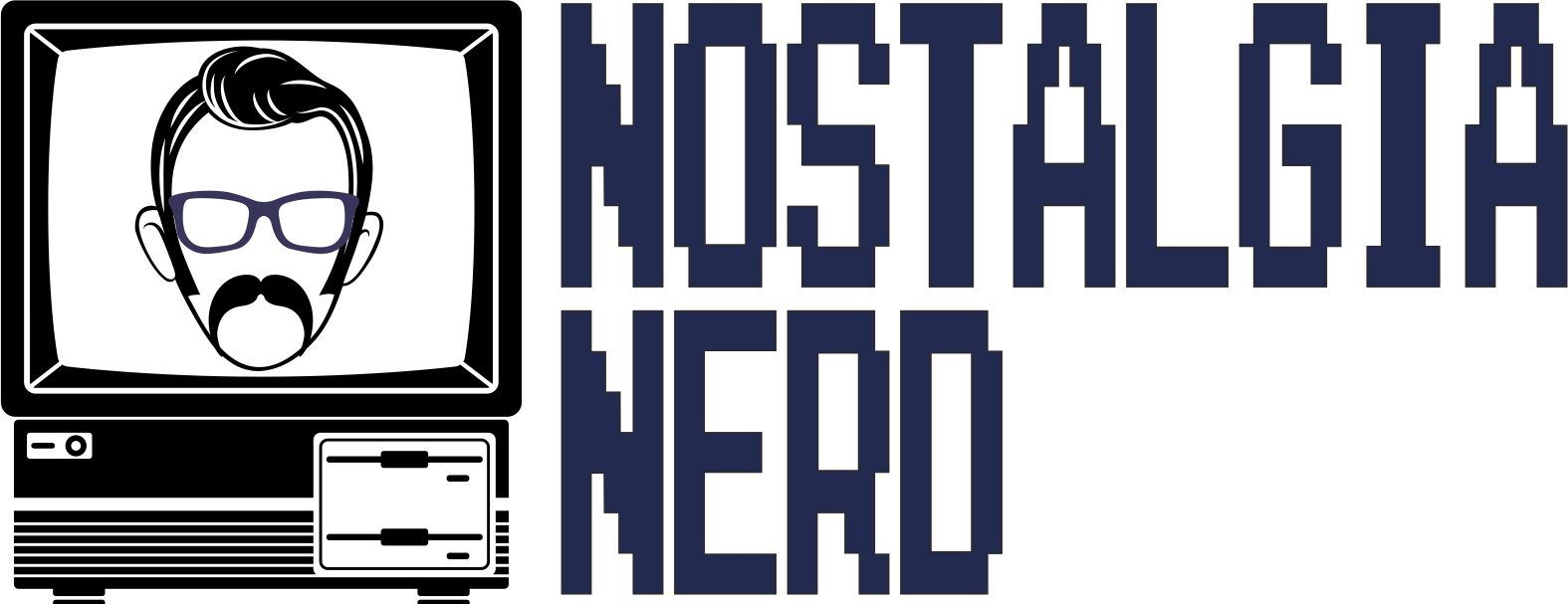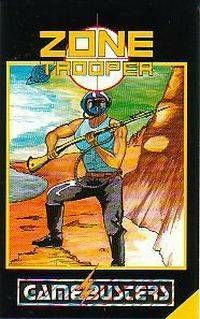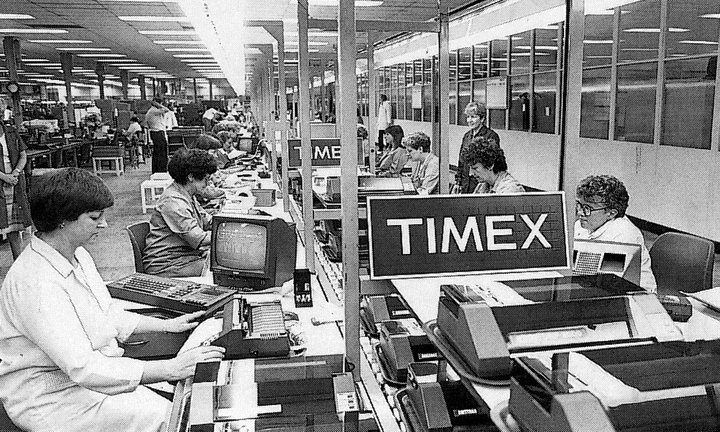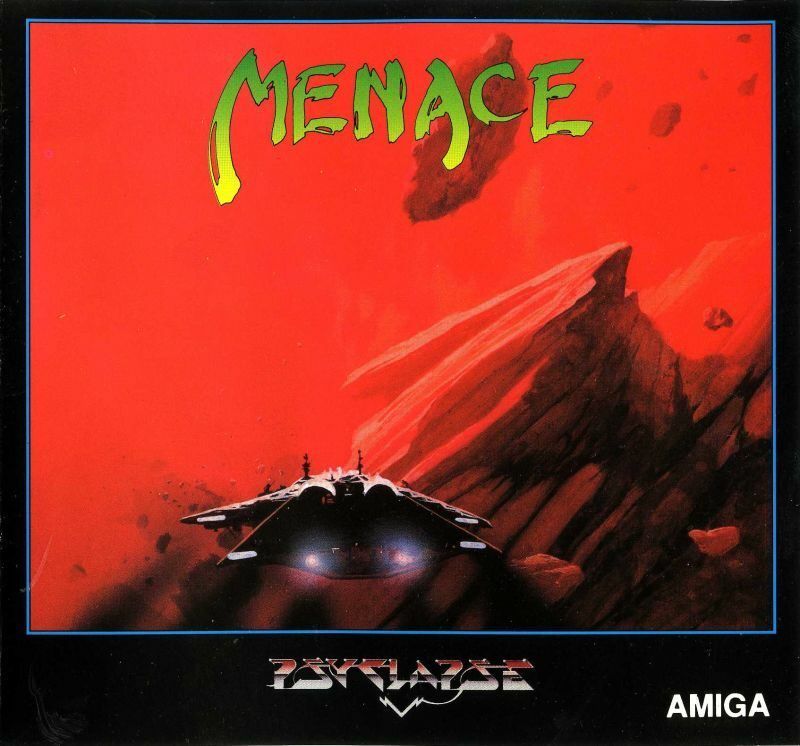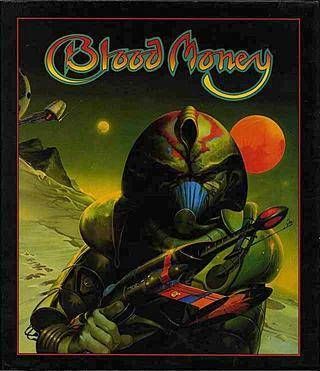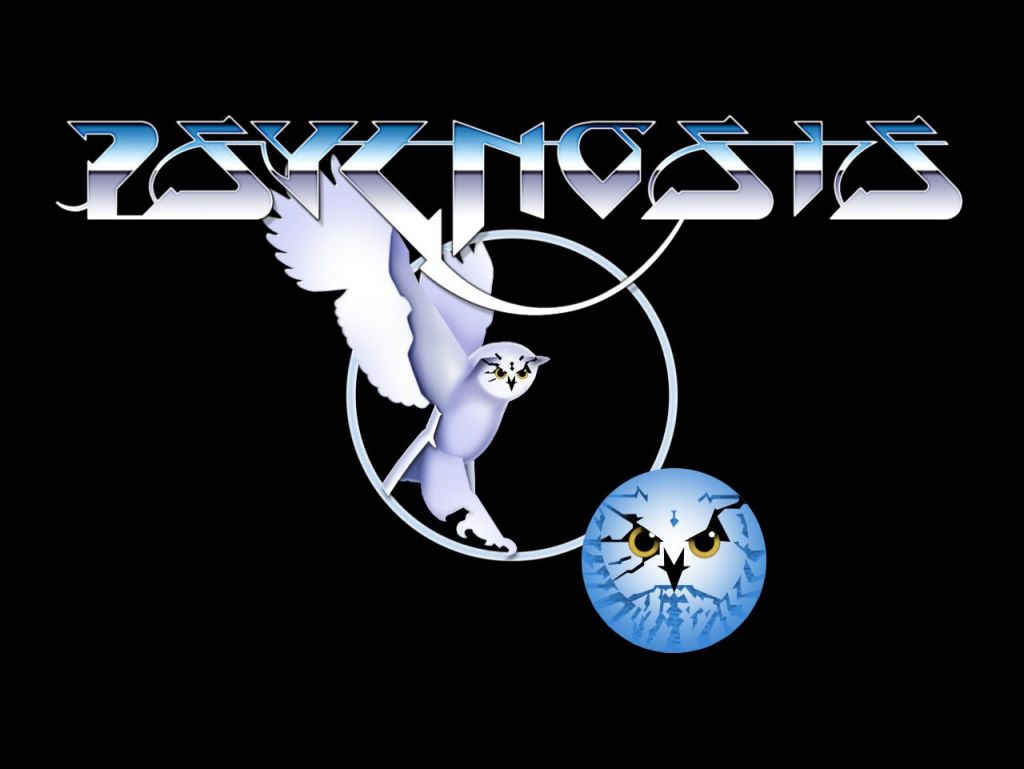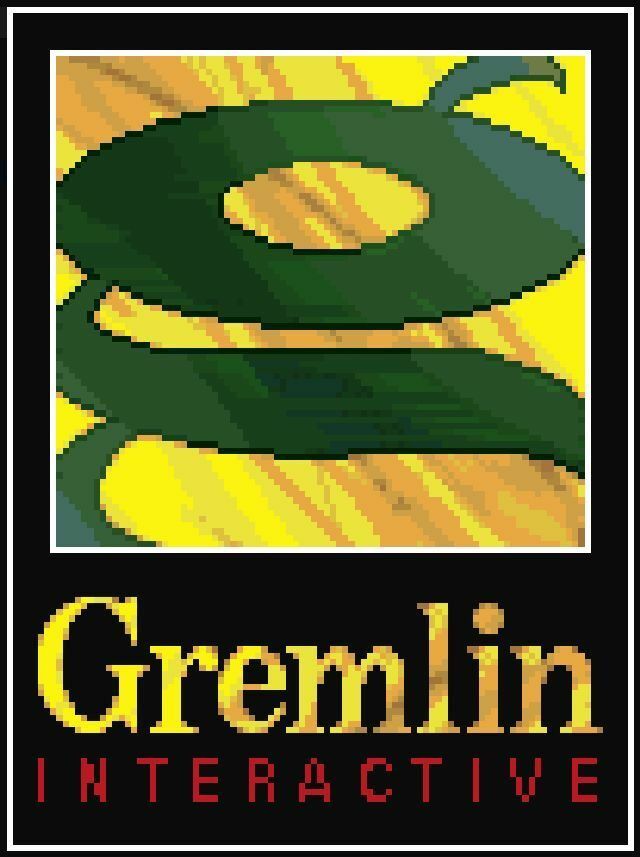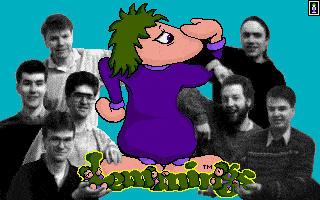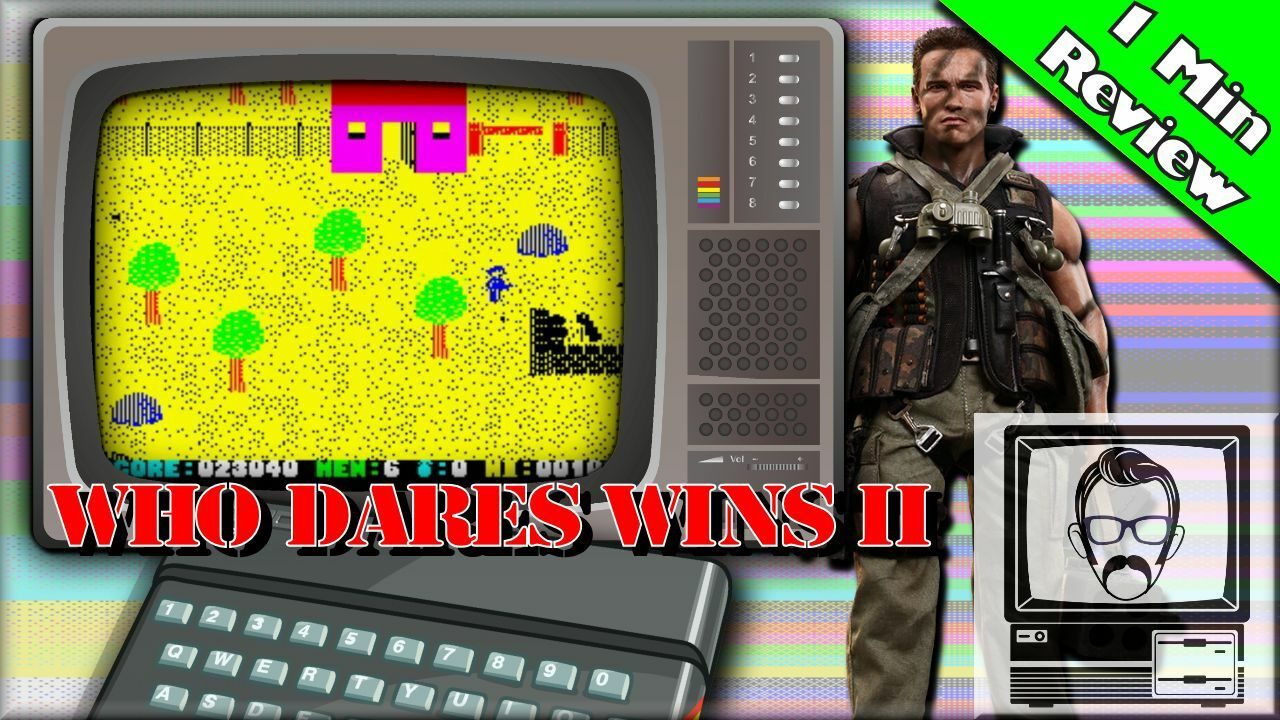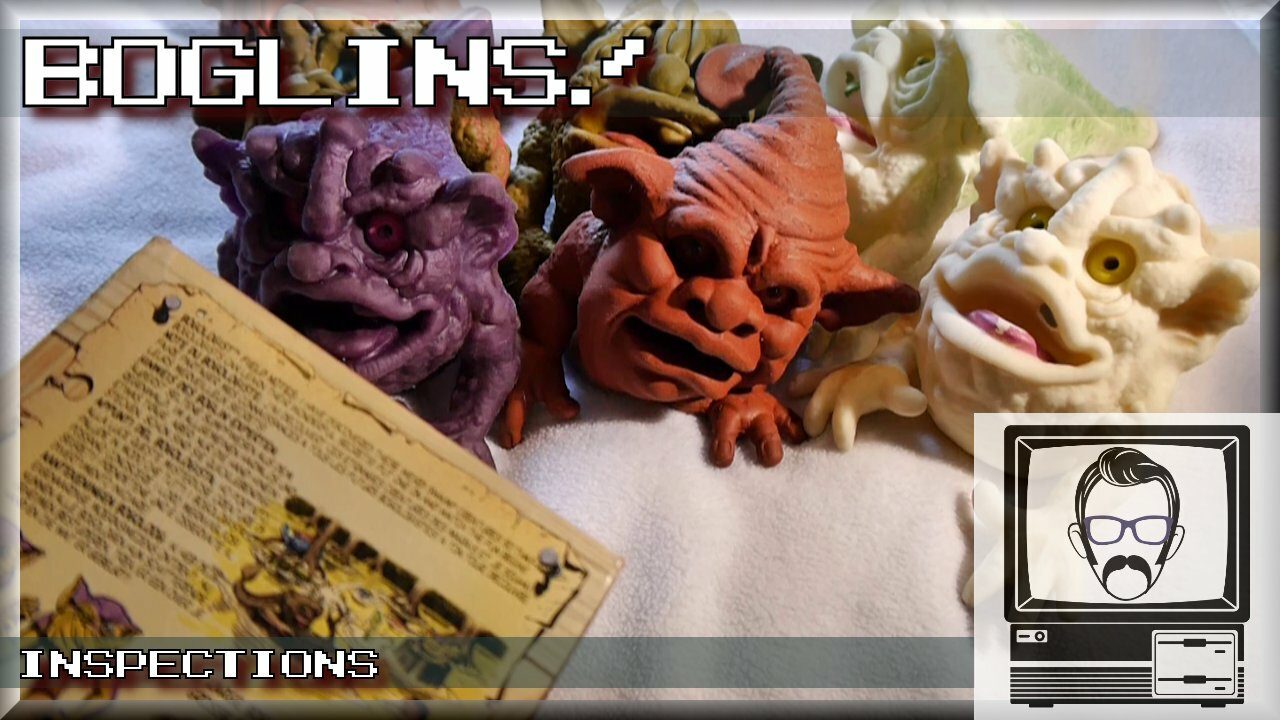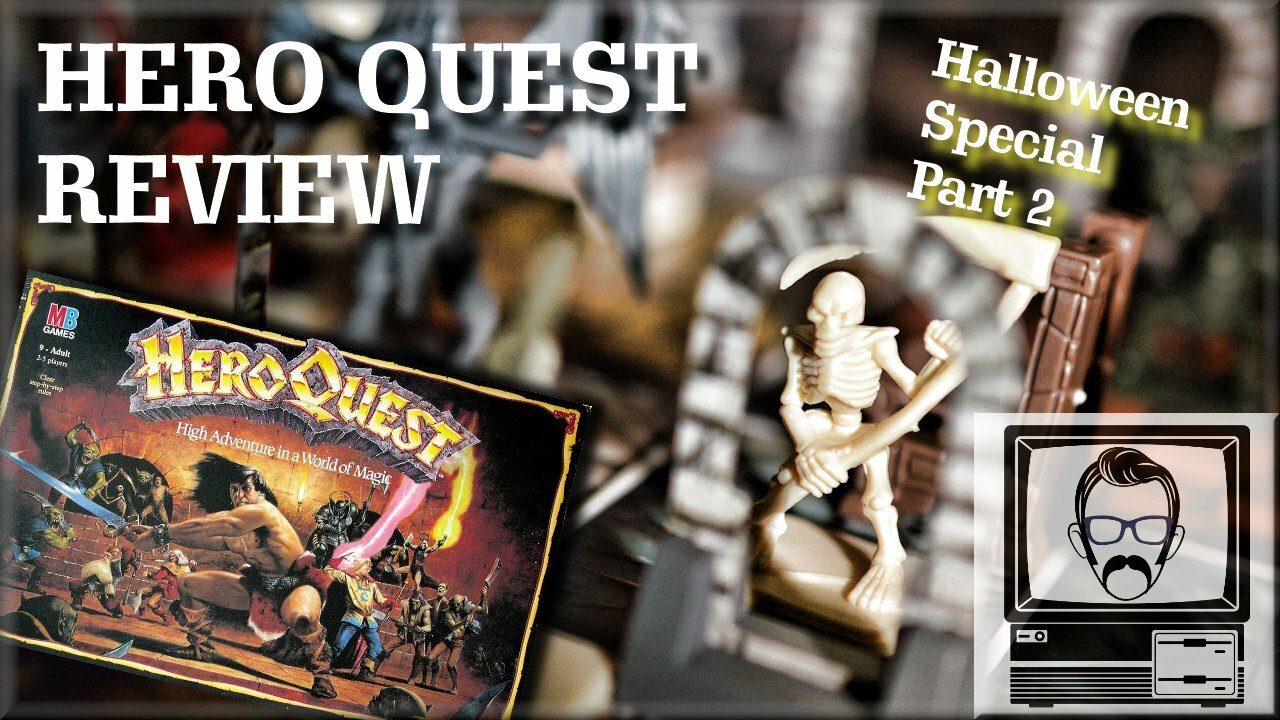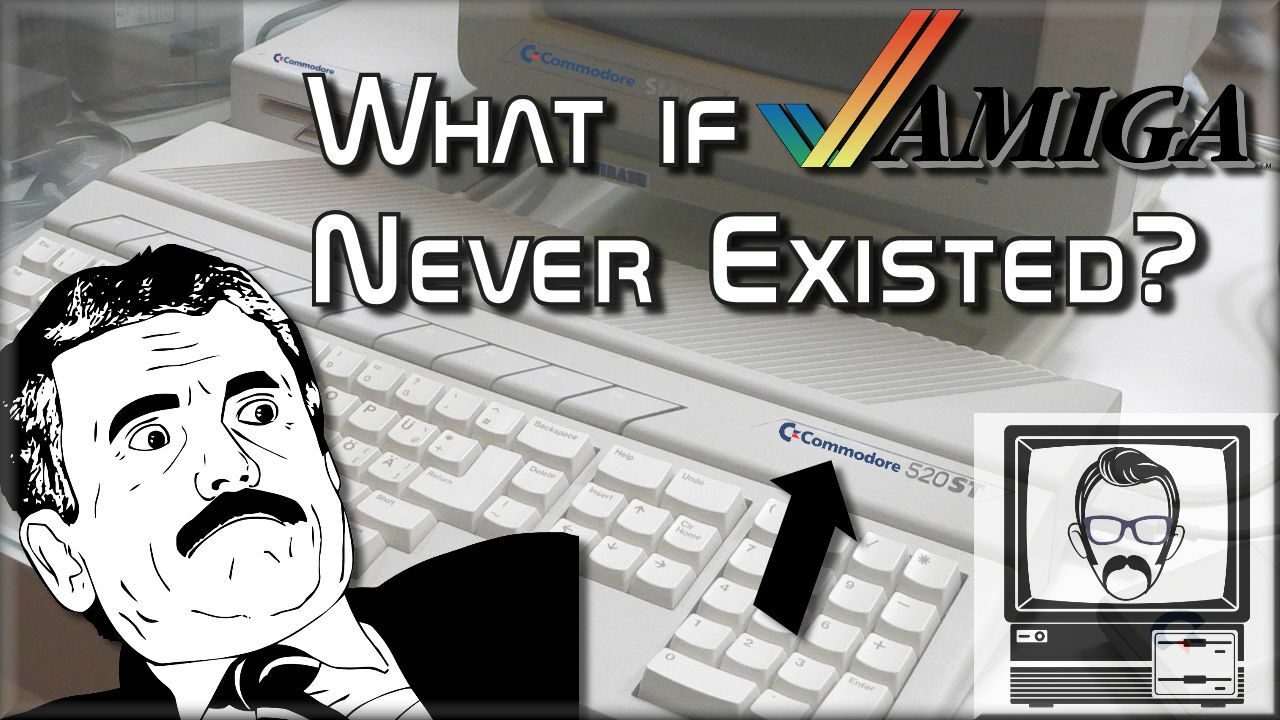Watch the Video
This documentary of gaming history charts of the story of DMA Design and their voyage from Thursday night evenings at the Dundee Computer Club back in 1983, through early ZX Spectrum and Commodore 64 game conversions such as Zone Trooper & Shadow of the Beast, through the phenomenal success they encountered on the Amiga and PC.
To trace the beginnings of this epic development machine, you really need to go all the way back to 1983, when a small group of friends would frequently meet up at the Kingsway Amateur Computer club each Thursday evening in Dundee’s Kingsway Technical College.
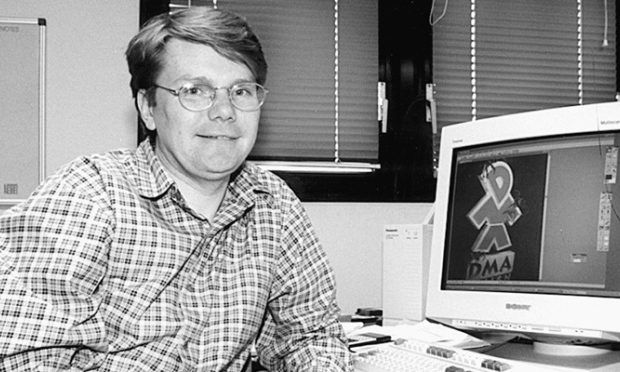
Dave Jones – who was the oldest of the bunch – would often pick up and drive Russell Kay round, and together they would dabble on machines like the Spectrum and Commodore 64. Steve Hammond would join the club shortly after, followed by Mike Dailly in 1984. Between the club and the local arcade haunt, the young team were inspired by the games they saw and and subsequently made, with Mike Dailly writing a break out clone under the moniker of Freek Out for the Commodore Plus/4, which was almost released in 1987, but due to the changes Cascade games demanded, wasn’t; Steve Hammond was involved and served on graphics duty for this escapade.
Dave Jones with Russell Kay meanwhile began writing a Spectrum budget game called Moonshadow, renamed to Zone Trooper, which was eventually published by Gamebusters in 1989. The team also collaborated on other gaming ideas, with Dave working on titles such as “The Game with No Name” which evolved into a Nemesis style shooter and Mike and Russell coding up “SplatterLight”, intended to be a cross between Gauntlet and the Spectrum game Splat. The only game which really became commercially available however remained Zone Trooper, which was also ported to the Amstrad CPC by the team.
Even though Zone Trooper wasn’t developed under the DMA Design badge, it’s during this development where things got interesting. Dave Jones obtained his first Amiga 1000 using redundancy money from his electronics job at Timex (the Timex Dundee factory also being the place where Clive’s ZX Spectrum was manufactured), and inbetween wowing the other friends with it’s technical ability, began work on a title called CopperCon-1, named after an Amiga hardware register and inspired by his love of Konami’s shoot-em-up Salamander, with some of the final games sound effects directly recorded from the Salamander arcade cabinet in Dundee’s Reform Street arcade. He began seeking a publisher for the title, approaching Hewson Consultants in the first instance.
Andrew Braybook and Hewson were keen to release the game as the “Amiga version of Zynaps”, but Jones realised sales would be limited and refused to sign the contract, although not before Hewson had taken the liberty of getting it on the front cover of Personal Computer Weekly. Soon after Dave ended up on Psygnosis’s Liverpool based doorstep, and a deal was quickly struck, leading to an Amiga group connection known as Tony Smith being roped in to complete graphics on the title, after Dave was blown away by his work with “The Kent Team” – a Southern based Amiga group. Dave gathered the remainder of their quickly amassing group of coding-buddies together to decide on a name, realising that a company could be built from their combined skilful band of merry men.
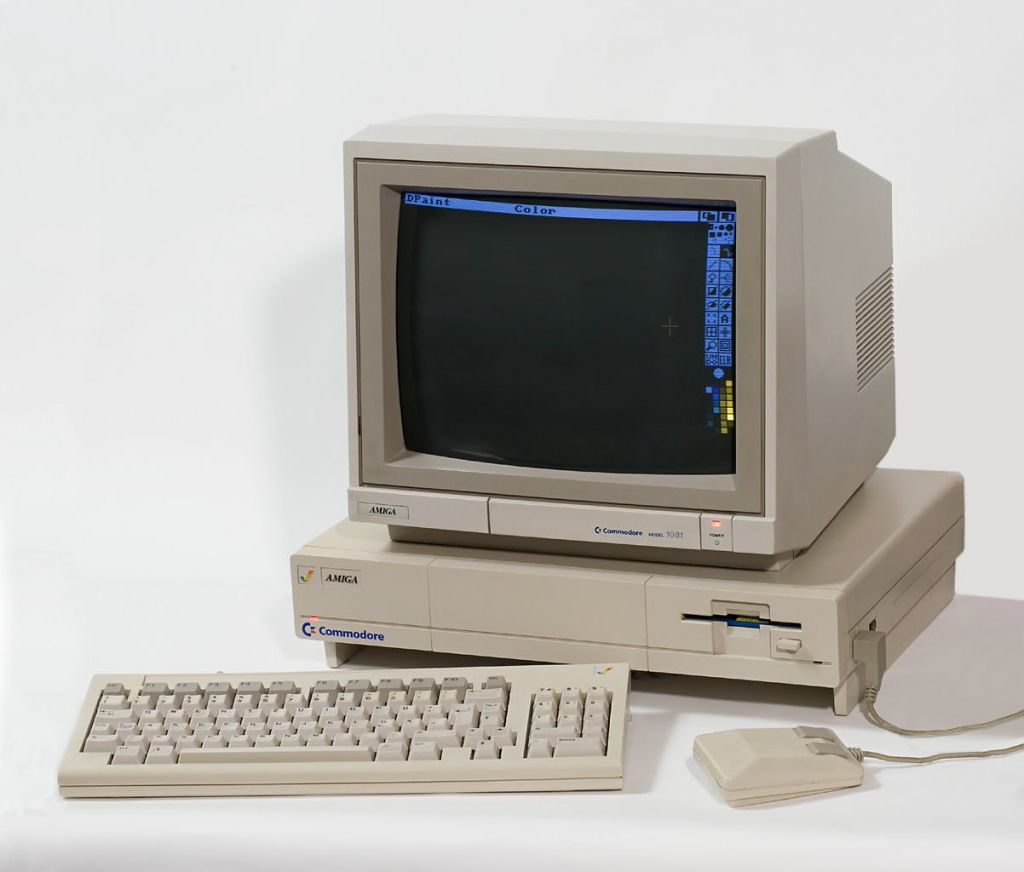
The Dawn of DMA
Dave Jones’s preferred name of Acme Software was taken, and so the group eventually settled on DMA Design, standing for Direct Memory Access, taken from nearby Amiga programming manuals (rather than Doesn’t Mean Anything as journalists were often told at the time), and so it was, in amongst the other individual projects, that DMA Design was founded in late 1987.
With DMA founded, CopperCon-1 was renamed Draconia, but due to another game coincidentally launching weeks before hand with the same name, it was changed again to Menace – with some magazine reviews published too early to change, still naming the game as Draconia in print. These names followed Jones’s requirements that every game should consist of a word used in general conversation or be part of a well known phrase (i.e. menace to society). It was DMA’s first game and was published in 1988 for the Amiga, with music provided by David Whittaker, who had been around in the Commodore 64 scene for a while with compositions for games such as Glider Rider.
Conversions of Menace followed for the Atari ST coded by Brian Watson – a university friend of Jones -, as well as Commodore 64 and DOS in 1989. One particular challenge for the Atari ST version was replicating the smooth scrolling, a hardware feature the ST lacked, Watson’s solution was to create 8 entire screens at a time, each one 2 pixels further on than the last. This was quite memory intensive, but worked well none the less.
Tony Smith was kept on, working down south, and he became responsible for creating DMA’s first logo with frequent meet ups between himself and Jones at Psygnosis’s mid-way office. The logo would subsequently change with almost every game created, up until 1996.
The money quickly started coming in, and with it Dave Jones began his passion for cars, beginning with the purchase of a 16V Vauxhall Astra. This also sparked him to quit his “in-progress” HND in Computing at Dundee’s Abertay University to concentrate full time on game development. Although as far as his lecturers were concerned, only System Engineers made money… Oh, how wrong they were, which was subsequently acknowledged when they provided Mr. Jones with an honorary degree and made him a fellow of the university, whilst also launching the very first Computer Game development course in the country.
Happy with the work from DMA, Psygnosis, sent Dave a new toy, in the form of a spanking new 386DX 25MHz. Complete with a personal development system, this allowed him to compile code and transfer it over parallel cable to the Amiga in a blink of an eye. This was a whole new realm compared to coding straight onto the Amiga 1000.
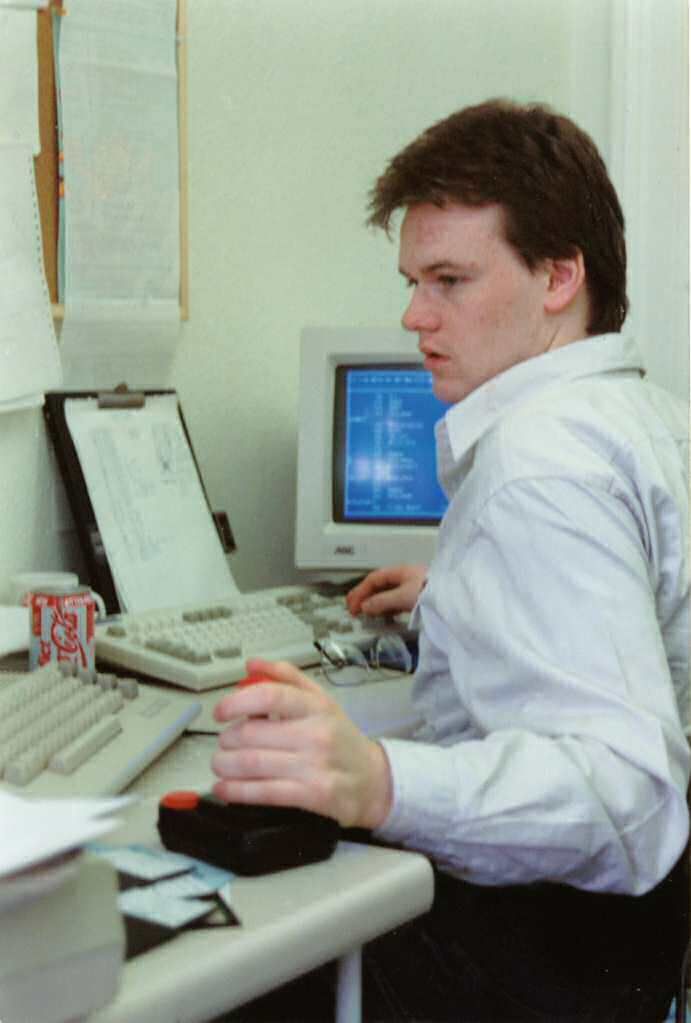
It was around this time that Mike Dailly was asked to leave college due to low attendance, and quickly started helping Dave work on the new project, which would become Blood Money, which owes some inspiration to Irem’s arcade scroller, Mr. Heli.
At the same time Psygnosis had given the nod for Menace to be ported over to the PC, which Russell Kay had jumped on with great gusto. At this point, the team were still working from their individual bedrooms, or crowding round each others to work on jobs concurrently, however, it was also the point which some members such as Mike were brought on as salaried members, rather than earning money on a project basis. To aid in his development of C64 titles, he was also given a Dolphin DOS system, but it didn’t cut the mustard as much as the guys had hoped, taking 20 minutes to build new iterations of code. Essentially this meant if there was one tiny error, you’d have to fix it and then wait another 20 minutes, and so on. This is the process used for Mike’s first conversion job, handed by Psygnosis, in the form of Ballistix for the C64. It was in this game that Mike learnt to trick Commodore’s 8 bit hardware into displaying 32 on screen sprites, rather than the default 8, a pretty mighty achievement, especially for your first conversion job. Impressed, Dave handed Mike a brand new 286 12Mhz PC, which improved things considerably.

With Russell’s Menace conversion now complete for the PC, it was passed to Psygnosis for testing, who apparently missed the bug of only the first bullet causing damage to enemies. Subsequent bullets would pass straight through. If you play the game, it’s still there to this very day. Anyway, it was during this work that Russell wrote a tool called ILBM2RAW. This handy tool essentially took Deluxe Paint images and cut graphics out for programmers to use. This was one of the first tools that would speed things up considerably for the team, as they each became more streamlined at tasks in hand. Russell then moved onto the PC port of Ballistix.
While the guys were hard at work. Dave had taken up the task of sorting a workspace out for the team. His father in law owned a chip shop, called the Deep Sea with an accompanying office space across the road. This quickly became the base for DMA Design which the members began the routine of commuting to on regular basis.
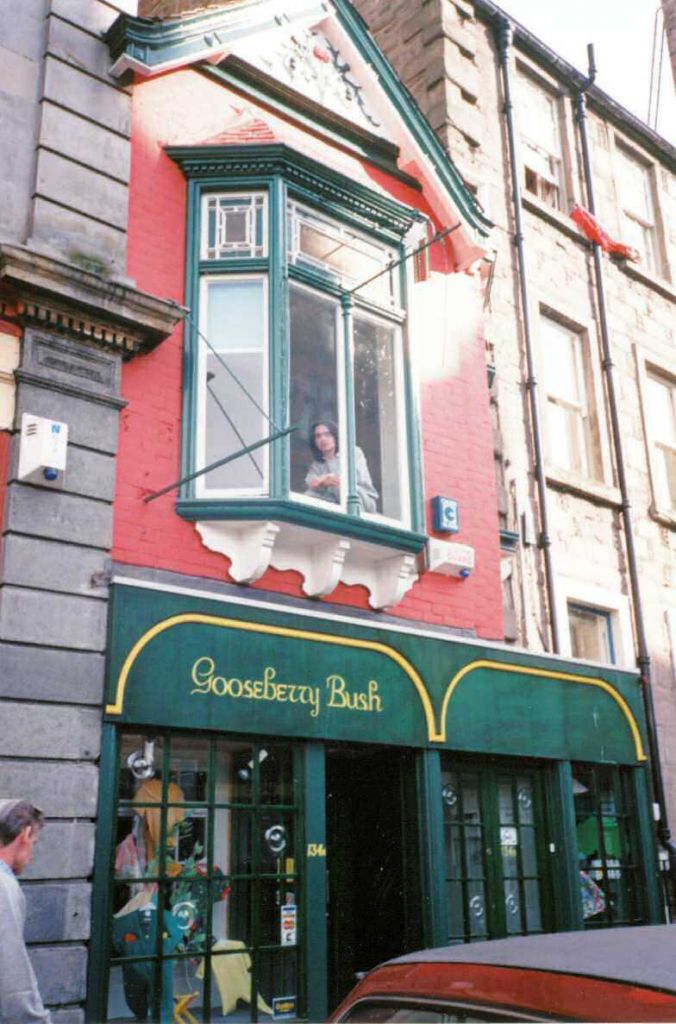
Another friend of Dave’s; Gary Timmons, was next on the sign up list. After coming into the office to look around, Gary was taken by the animations in Blood Money and began to sit in the corner and using dots, replicate the Walker animation Tony from “The Kent Team” had been working on – it was an ED-209 style sprite created for Blood Money, which the team started to believe they could write an entire game around. Dave saw the potential from Gary and quickly set him up in the back room with Deluxe Paint.
It was late 1989 and the team consisting of Dave Jones, Russell Kay, Mike Dailly, Steve Hammond, Brian Watson and Gary Timmons was now 6 strong, some salaried, others not, with other people still brought in externally to assist. Most of the guys were still under the age of 20 at this point, with Dave Jones himself still only 23 years young.
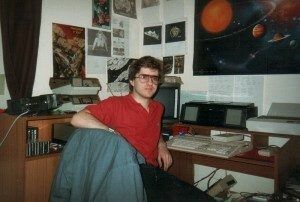
Bloody Money was finished up and released in late 1989, under Psygnosis and converted to the usual other platforms including DOS, the Atari ST and the C64 later in 1990. It was another good shooter from the team, who had growing reputation, and scored well in magazine reviews at the time.
The Dawn of Lemmings
Demand was growing, and more people were still needed. Scott Johnston was brought in on freelance to do graphics for the next game, Walker, which yes, was inspired by the earlier Blood Money animation. Dave immediately began the process of coding it up. It was also around this time that Scott and Mike would have the famous discussion that led to LEMMINGS!
Mike – who had just received his first monthly paycheck of £272 – had seen tiny 5 pixel high sprites in the game Oids – an ST shooter where your ship rescues android slaves. He thought that somewhere between this and a 16×16 sprite would be a perfect sweet spot. A sprite that could be replicated lots of times & retain its own character, but make the Walker look big by comparison; these little guys would make perfect prey for the Walker. He created a demo one lunch time of men being crushed by weights and shot by guns, with Gary Timmons adding a few more traps, including a chomping mouth. Gary also loosened up the feel of the characters by adding floppy air.

Russell Kay saw the demo, and immediately voiced “there’s a game in that”, later coining the little sprites, lemmings. A demo of the little guys moving was then assembled and during the late 1989 Personal Computer World Show, was shown to Psygnosis. By this stage, the lemmings formula had not even been conceived, and these were just little guys walking across a landscape. The colouring was altered to suit the PC EGA palette, and green hair was decided as appearing nicer than blue. For the time being, the demo was then left on the shelf.
1990
Meanwhile 1990 rolled around. A few things happened now; Mike started on the C64 version of Blood Money and Dave Jones progressed with the new Walker game. Gary had produced a Disney style walking character with an astonishing 24 frames of animation and Russell was busy at Dundee university. Brian was tasked with writing a dedicated games debugger – another tool that would help with the team’s development process.
Not long into 1990 Dave decided that Walker needed more work on the gameplay and so shelved it, in order to concentrate on other things. First was a series of 6 programming articles for Amiga Format, then a Shadow of the Beast contract came in for converting to the Commodore 64 – this was passed to one of Mike’s friends, Richard Swinfen, and then another friend of Mikes from the Abertay Computer Club, Tony Colgan was brought into start a new game called Cutiepoo. This was never released but previewed in magazines, showing a character called Dr. Mallet who’s task was to squish tribbles with a huge mallet. Ahhhhh, such an elegantly ‘90s game formula.
Further games were shelved at this time, including Gore, a hack and slash Amiga game, which really needed 1MB of memory to run – something uncommon at the time. It was in this frenzy of projects that Mike decided to try his own “lemmings” test on the C64. He got as far as a single lemming strolling across the screen before he was pulled to yet another job in the guise of an Amiga Shoot em up, another of many projects that would be shelved.
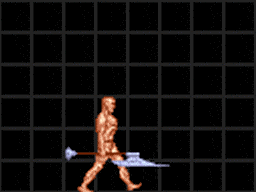
At the same time, Dave had started work on an Action Replay style cartridge for the Amiga, tentatively called the “Monster Cartridge”. Whilst other formats, such as the C64 had such a cartridge, the Amiga currently did not, unfortunately, the development of the cartridge was fraught with problems and even though Datel (who owned the Action Replay brand) were keen to buy the product, another development company pipped him to the post with a fully working cartridge. Datel snapped this up instead.
During this, Scott had entered the office one day and showed the team a game he’d been working on at home. This game was similar to earlier first person RPG crawlers, such as Dungeon Keeper, but something was different. This new game allowed you to control four players at the same time, each having their own view! This would of course become the legendary Hired Guns. It still required a lot of work, but the seed had been sown, and DMA were on course to release some of their biggest titles yet.
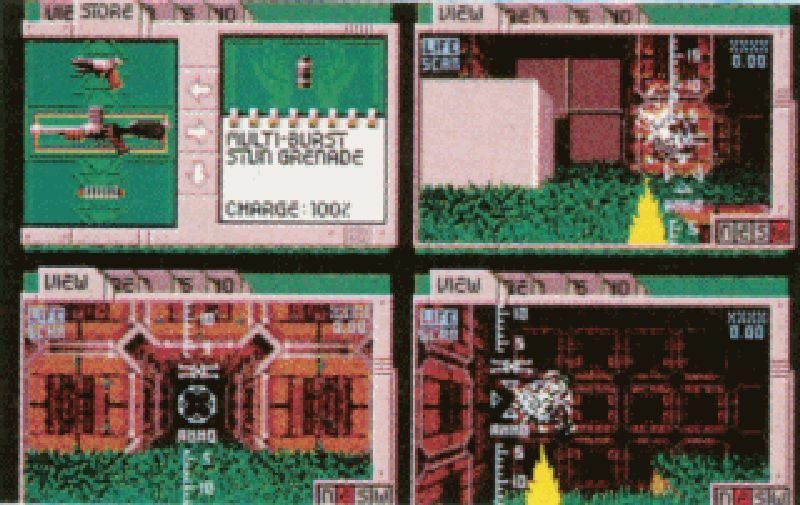
With the Monster Cartridge a “no-go” Dave had returned to work on what would become Lemmings. Originally conceived as a sequel to Blood Money, the game was now beginning to take on it’s own dimensions.
He and Gary began working on the basic skills and screen layouts, along with some fine adjustment on the animations. The shoot-em up Mike had been working out was outsourced to a programmer called Dave Whiteman and Mike was given the task of creating an amusing front end screen for “Lemmings”. The original idea for the screen was to have hundreds of lemmings filling up the screen all doing different tasks, but this just made the screen too confusing and was canned. Mike was then tasked with starting an Atari ST port, which he set about by elegantly writing a Blitter emulator, so that the Amiga code would be ported without a great deal of effort. This version later fell into the hands of Brian.
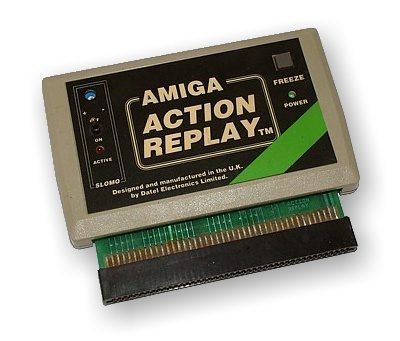
It’s in this frantic delegation of work that DMA DOS was also conceived. This would form the disk loading system for future DMA games and allowed loading and saving of progress, which is handy when you don’t want to type in a lengthy level code each time. Work was busy and the initial outline of Lemmings was looking good.
Thankfully for the team some respite came in the form of ITV’s telethon and Writing an entire game in a day for charity, from scratch. So probably not that much respite then. The whole team were involved on Monday, 28th May in writing “Super off Road Hot Turbo Buggy Simulator”, a simultaneous 4 player Supersprint style game which although pretty much completed, never saw the light of day.
In between various requests for ports of games such as Shadow of the Beast – for the PC Engine on this occasion- , sound effects were on the agenda for Lemmings. Initially 60’s style TV theme tunes were used, but copyright issues came up, so it was decided to use anything that didn’t hold a copyright tag, early sound effects for the Lemming squeeks were provided by Scott’s mother. Brian Johnson and Tim Write would eventually finish up the music, based on old classics such as “How much is that puppy in the window”, and those catchy riffs would form a memorable aspect of the game.
An Expanding Company
DMA Design was expanding, and with this saw a move to 49 Meadowside, Dundee. An office block with space for 4 rooms. With the additional space, more work could be accomplished, and with Russell finishing up his degree course, he began the PC version of lemmings.
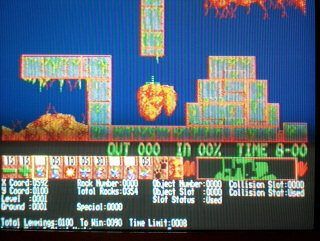
By now, the Amiga version was coming along nicely, with a level editor tool in place allowing for rapid level building, and frantic competitions between the guys to build the best levels in the game. £10 was offered for each level that made it into the game. Different team members took different approaches to level design and naming, with some encasing clues such as “It’s Hero Time” – a reference to a single lemming going “over the top”, and one of Mike’s favourite levels, for the lateral thinking required. Other levels such as “I have a cunning plan” were clever references to Black Adder, whilst others were just intended to sound compelling.
The two player option came about due to the teams’ favourite games of Populous and Stunt car racer, and their novel use of null-modem cables for multi system, multiplayer. However as the Amiga (and also the Atari ST) allowed 2 mice to be plugged it, in made sense to just split the screen and offer 2 players on a single computer. The PC lacked this ability, and so the option was subsequently dropped from later versions. ~The middle bar by the way, is a hardware sprite to cover some of the messy screen scrolling you’d normally see underneath.~
A arcade version of Lemmings was also intended at this point, and it’s actually where the fast forward option from Lemmings 2 would come from. Controlled by trackball, it was due for release in 1991, but unfortunately never made it to fruition.
Psygnosis was thrilled with the game at it’s release on 14th February 1991 and spent ages testing levels for DMA – because of course, DMA members were now good at solving levels very quickly, making difficulty hard to gauge. Sales figures went up and up and up, with the Amiga version shipping over 55,000 copies on the first day alone. If you compare this to the total sales of their previous games, with Menance selling 20,000 and Blood Money at 40,000 in their lifetimes, it’s clear that Lemmings was in a different league entirely. Some review magazines were rating the game with the unprecedented score of 100%, which was completely unheard of.
The game is one of the most converted in history, many of which were carried out by DMA, and it’s estimated that a whopping 15 million copies were sold worldwide across all platforms.
The response to this uptake was to take on more staff. Psygnosis were keen for a sequel, quickly and so with the basic game engine already in place, DMA put out the call for artists. The two recruited were Stacey Jamieson and Mark Ireland and they were put to work immediately, with their first task to play lemmings to get the idea firmly in their minds (sounds like a pretty good job induction to me!). Andy Whyte was also recruited at this stage, although initially on no pay, at his own request, so he could prove himself to the team.
The ST version of lemmings followed not long after, followed by the PC version, or should I say, 3 versions, with different sets of graphics required for VGA, EGA and CGA versions – remember, this was 1991, VGA was still pretty expensive.
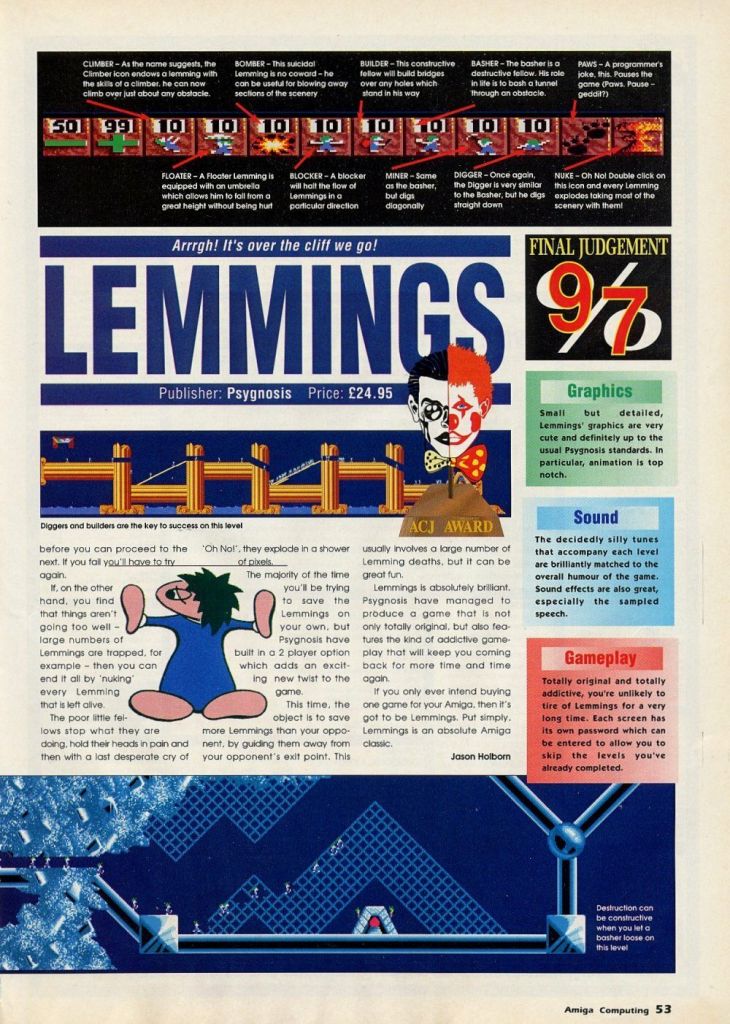
With the new team members on board and another move to even larger premises on the agenda, the ‘Oh No! More Lemmings’ expansion was pushed out in the same year, with various Christmas editions following and the stand alone sequel, ‘Lemmings 2, the tribes’ in 1993. The Lemmings franchise would be utterly and rightly milked before the decade was out, with both the Amiga 500 and 600 being bundled with the original game in various setups, and even leading to two spin off games in the guise of Lemmings Paintball and The Adventures of Lomax in 1996. 3D Lemmings which re-imagined the critters in third person perspective was published by Psygnosis under Sony Comptuer Entertainment, but actually developed by Clockwork games rather than DMA.
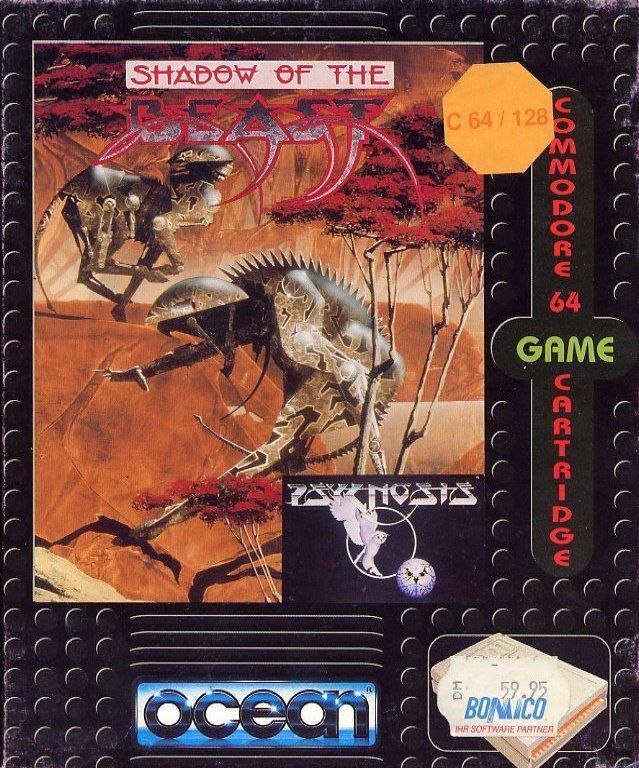
But before that, there were several more significant games which we need to address. With Shadow of the Beast ports finally released for the C64GS and PC Engine, the Walker game was back on the agenda.
Using the original Lemmings sprite inspiration, work continued with Dave back on development duty and the rest of the team chipping in on graphical aspects. The end result was released in February 1993, again under Psygnosis and featured a novel control system where both the mouse is used for aiming and a joystick for firing, something we’re more used to now days with mouse and keyboard controls for first person shooters. It’s a fun game and reviews for it were generally positive, although another game we discussed earlier was on the horizon, which would showcase the developers skill, once again.

Scott had been frantically working away at home on his RPG game, and in late 1992, it was nearing completion. Back in the office Steve exercised his writing skills – the same he’d used for the C64 cartridge port of Shadow of the Beast – and came up with the Hired Guns outline. Set in the year 2712, you control four mercenaries, sent to a planet with the goal of rescuing a hostage. However, the hostage is in fact a ploy, and the real reason behind your trip is to test you against a genetically engineered proving ground of creatures & weapons.
The game was promoted for a good while before its release, with Amiga Power running the gag that Hired Guns “would be in next months issue”, this continued for several issues, and even when the game had landed for review, the magazine kept the text in, joking that they no longer knew how to remove it. Those jesters.
The Nintendo Years
With DMA now in full stride, and firmly placed in new offices, it was a slight shock when Sony acquired Psygnosis in 1993. The response to this was for DMA to sign their next title – one which would again provide evolutionary for the team – with Nintendo. The first time, the team had moved to a new publisher, but boy, was it a big one. Known as 1×1 during development, Unirally was released for the SNES in December ‘94 for North America, and April 1995 for us poor lemons stuck over in Europe. Immediately after it’s release, Pixar attempted to sue for allegedly copying the unicycle design and concept from their 1987 short film, Red’s Dream – Because naturally the unicycle didn’t exist before then – and as Mike Dailly put it, “The problem with Pixar was that they seemed to think that any computer generated unicycle was owned by them”. Shockingly DMA lost the lawsuit and Nintendo had to terminate cartridge production, but this still left a reasonable 300,000 cartridges sold in it’s first run.
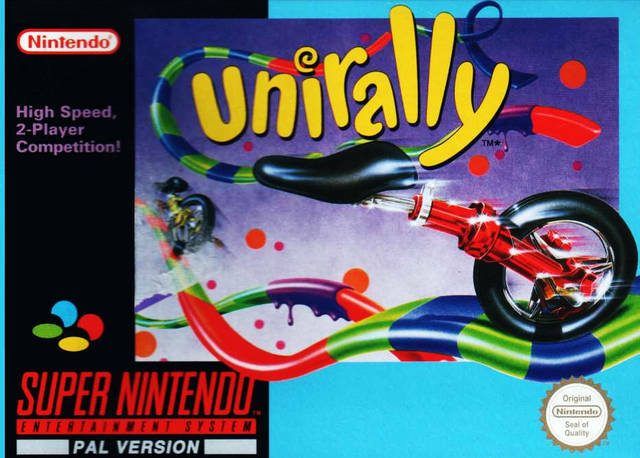
The initial success of Unirally led Nintendo to request DMA for an exclusive game for their new shiny Ultra 64 hardware. This game was Body Harvest, and if you’ve ever played the game, then you can see inspiration starting to crop up for their next, and arguably most successful franchise.
Wanting to take advantage of the full 3D capabilities of the machine, the game sees you taking the role of a genetically engineered solider in a non-linear open world. Reviews of the game were very positive, however due to some delays on Nintendo’s side, followed by Nintendo completely dropping the title. This left Midway to pick up publishing rights and the game finally arrived 3 years after it’s due date in 1998 – originally supposed to be a launch title.
The time span and changes involved in the production of the title, left the game’s team weary and frustrated, and in need of another creative outlet. Now you might argue this unfortunate series of events, was actually quite a blessing. One that only time and life can spell out. For the title they chose to work on, with a similar vision was indeed, Grand Theft Auto.
Grand Thef Auto
Development of GTA began on 4th April 1995 in DMA’s new Edinburgh offices. Mike recalls how difficult it was to get a racing game past Dave Jones’s careful eye, so something had to be different. The team had been working on an isometric style engine, but weren’t very impressed with the feel of Syndicate Wars when it arrived on the scene and so wanted to try a slightly different strategy.
Having now acquired experience with Nintendo, the original game – whatever it was to be – was intended for release on DOS, Windows 95, Playstation, Sega Saturn and Nintendo 64.
Originally named “Race’n’Chase”, Mike took the usual third person driving game perspective, and instead of painting the distance on the horizon, built a virtual wall directly in front of your view port. On this virtual wall, he placed a road and city layout, and flipped the mannerisms of the car to move around within this city perspective. This was quite literally a racing game, flipped onto its side. Seeing the city from top down, and knowing that you could have a detailed simulation of city life, was enough to sell the concept to Dave Jones. Production was scheduled for 1 year, with a new team of developers. Within this team, many of the game elements and gameplay styles appeared through natural evolution.
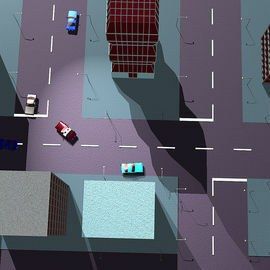
The concept of an open environment was there – with Elite cited as inspiration by then creative director Gary Penn – including the ability to take on different jobs as and when you wished. But gameplay changes, like being the bad guy rather than the cops, stealing cars and running over lines of Hare Krishna were added as the game evolved. The game has similarities to the Commodore 64’s Miami Vice, which may have been an influence, but not a main one as cited by it’s designers.
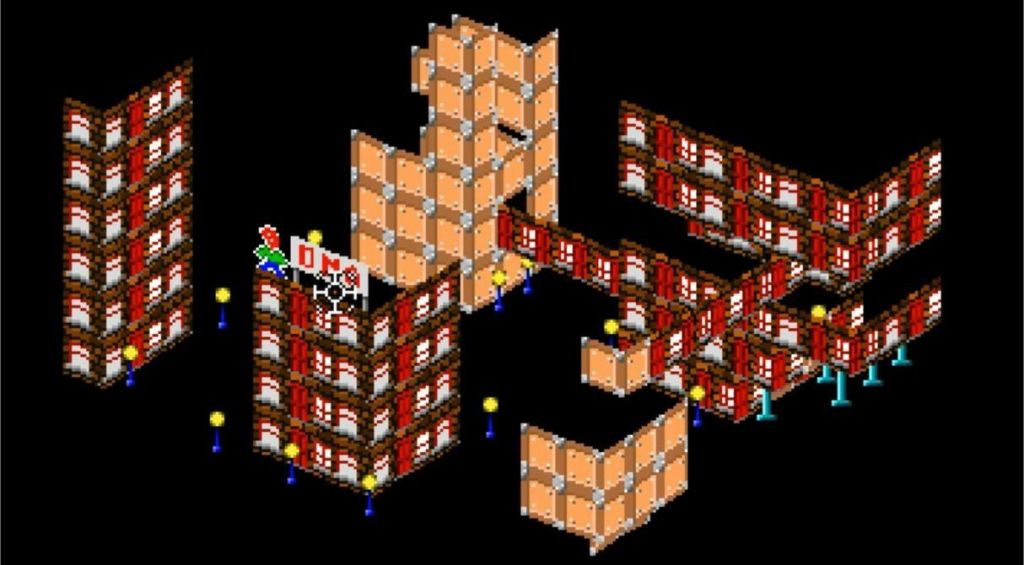
GTA was released a year before Body Harvest in October 1997, published by BMG interactive and immediately hit worldwide acclaim, helped in part by the sensationalism and uproar deliberately intensified by Max Clifford, in a similar vein to Mortal Kombat had caused a few years before. This master stroke increased sales and extended coverage globally, and it soon became the game, everyone – myself included – needed to have.
Never reaching the Sega Saturn or N64 platform, but instead astutely being ported to the Playstation 1, the game would sell over 1 million copies, not quite as many as Lemmings, but still a bloody good effort in anyone’s book.
The end of Days
Riding at the peak of it’s creative output, DMA Design was then duely snapped up by British publisher Gremlin Interactive in late 1997. Impressed with DMA utilising their 3DMA graphics engine efficiently, and with plans for newer titles such as Clan Wars and Attack (both of which were cancelled) Gremlin wanted to closely collaborate with the existing DMA team and Dave Jones was quickly shuffled to the role of Creative Director.
Under this arrangement, we witnessed the release of Space Station Silicon Valley for the N64 and Tanktics for Windows, although ties with Gremlin started to turn sour, with Gremlin’s R&D head having some very different views on how things should be done. These games were reasonable efforts, but seemed to lack the shine & passion of earlier DMA games we’d seen.
From there on out, things get a little more complicated as we move through the corporate world of acquisitions and intellectual property rights. Things start to feel less like the fun, creative team from DMA and more like a corporate machine. Never the less, with the same minds still working, good things continued to come. Wild Metal Country would be the last game developed under Gremlin Interactive, and published by the French publisher Infogrames studios.
Infogrames (who are now under Atari) would then make the move to purchase Gremlin themselves in 1999 for £24 million, but BMG Interactive, who published the original GTA game and who would go on to become Rockstar, still had a deal in place with DMA to produce titles. This in turn led to Infogrames selling DMA and it’s associated team to Take-Two Interactive, who were the parent company of BMG Interactive.
So now we have a position where Take Two Interactive owns both DMA Design and BMG Interactive. From this point on the position of the GTA franchise looks quite rosy, and Take Two were fully aware of this.
Under new ownership once again, and after losing the likes of Russell, Mike, Steve and Brian, what remained of DMA set about polishing off the development of ‘Grand Theft Auto: London, 1961’, quickly followed by Grand Theft Auto 2, but the constant changes of ownership and movements were taking their toll, and with DMA becoming known as Rockstar North under it’s new ownership, Dave left whilst Grand Theft Auto 3 was in production – which ironically became the third person driving game Mike had been trying to originally conjure, way back in 1995.
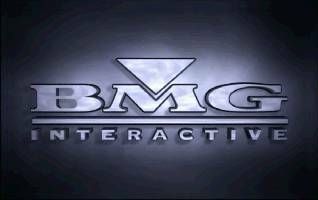
Take Two Interactive would also launch Lemmings Revolution in April 2000, which received reasonable reviews, and remained true to the original Lemmings formula.
Sadly, with the shuffling and leavers, several games were lost during this period, including the N64 ports of Grand Theft Auto and Wild Metal Country.
But it’s not without a happy ending. After leaving Rockstar North, Dave setup a studio in Dundee that became a subsidiary of Rage Software and subsequently Realtime Worlds in 2002. Many of DMA’s creative minds also moved there, establishing the smaller, fun team feel which DMA was founded on. Dave would later setup Cloudgine, a Scottish software technology provider, whilst the other team members followed their own creative paths.
As for Lemmings and Grand Theft Auto, well, they’re both games of legend and continuing success. After all, you’d have to have been living under a substantial rock to not have seen or heard of Grand Theft Auto 5.
As for Lemmings, I wait, and hope for worthy update.
Resources Used for this documentary
www.javalemmings.com/miked/aboutme.htm
archive.org/details/amigaformat11
amr.abime.net/review_1374
archive.org/details/Amiga_Power_Issue_30_1993-10_Future_Publishing_GB
www.nowgamer.com/history-of-dma-design/
readonlymemory.vg/the-making-of-lemmings/
www.dmadesign.net/tag/scott/
en.wikipedia.org/wiki/DMA_Design
en.wikipedia.org/wiki/Cloudgine
www.lemmingsuniverse.net/downloads/Lemmings-FAQ-v20.txt

Nostalgia Nerd is also known by the name Peter Leigh. They routinely make YouTube videos and then publish the scripts to those videos here. You can follow Nostalgia Nerd using the social links below.
